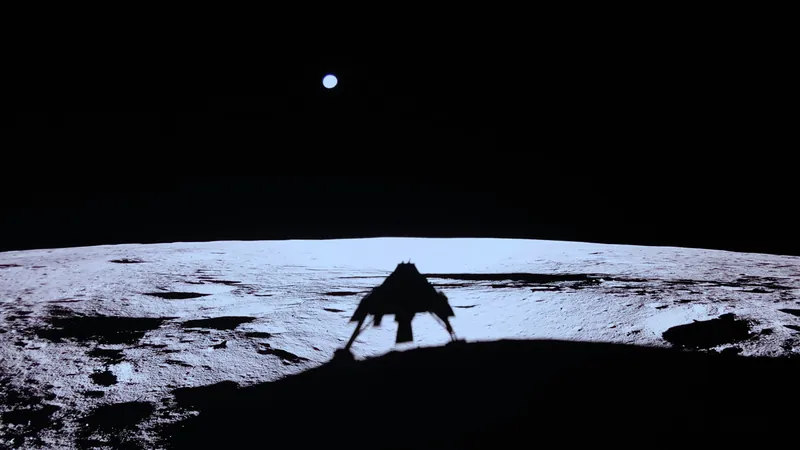
NASA's Groundbreaking Electric Dust Shield Triumphs on the Moon!
2025-04-03
Author: Wei Ling
NASA's Groundbreaking Electric Dust Shield Triumphs on the Moon!
In a remarkable advancement for lunar exploration, NASA has successfully tested its cutting-edge Electrodynamic Dust Shield (EDS) on the moon's surface. This innovative technology is designed to protect spacecraft from the abrasive and problematic lunar dust, known as regolith, which poses significant risks to both equipment and astronauts.
The EDS was deployed on Firefly Aerospace's Blue Ghost, marking the lander's historic achievement as the first privately funded lunar vehicle to touch down successfully on the moon on March 2. After a rigorous trial period, which concluded on March 16, the EDS demonstrated its capability to effectively eliminate dust from surfaces using electrodynamic forces.
NASA's Artemis program, with ambitions to establish lunar bases and facilitate further exploration in the upcoming decade, has identified regolith as a major hazard. The fine, abrasive dust can damage crucial equipment, spacesuits, and even affect human health. Consequently, the EDS's successful trial is deemed a pivotal moment, ushering in new opportunities for sustained lunar presence.
"This milestone is key to ensuring safe and sustainable long-term operations on the lunar surface and beyond. It significantly reduces dust-related risks for various applications, including thermal radiators, solar panels, camera lenses, spacesuits, and helmets," NASA stated.
The technology behind the EDS has its roots in the Electrostatic Curtain concept envisioned by F.B. Tatum and his colleagues at NASA in 1967. The current system employs electrodes and electric fields to actively repel and remove dust from surfaces, a significant leap forward in dust mitigation solutions. Developed at NASA's Kennedy Space Center in Florida through the Game Changing Development Program, the EDS has been rigorously tested in vacuum environments using lunar dust samples from Apollo missions.
The EDS made its initial foray into space aboard the International Space Station during the Materials International Space Station Experiment (MISSE)-11 mission back in 2019, laying the groundwork for this latest success on the moon.
NASA officials have emphasized that this technology is not just a breakthrough for lunar exploration but also paves the way for future missions to Mars and beyond, as effective dust management is critical for ensuring the safety and functionality of equipment in extraterrestrial environments.
As we look forward, the successful deployment of the EDS stands out as a beacon of hope for ongoing and future space missions, enabling humanity to explore farther into the cosmos than ever before! Keep an eye on the skies, space enthusiasts; this is just the beginning!


 Brasil (PT)
Brasil (PT)
 Canada (EN)
Canada (EN)
 Chile (ES)
Chile (ES)
 Česko (CS)
Česko (CS)
 대한민국 (KO)
대한민국 (KO)
 España (ES)
España (ES)
 France (FR)
France (FR)
 Hong Kong (EN)
Hong Kong (EN)
 Italia (IT)
Italia (IT)
 日本 (JA)
日本 (JA)
 Magyarország (HU)
Magyarország (HU)
 Norge (NO)
Norge (NO)
 Polska (PL)
Polska (PL)
 Schweiz (DE)
Schweiz (DE)
 Singapore (EN)
Singapore (EN)
 Sverige (SV)
Sverige (SV)
 Suomi (FI)
Suomi (FI)
 Türkiye (TR)
Türkiye (TR)
 الإمارات العربية المتحدة (AR)
الإمارات العربية المتحدة (AR)